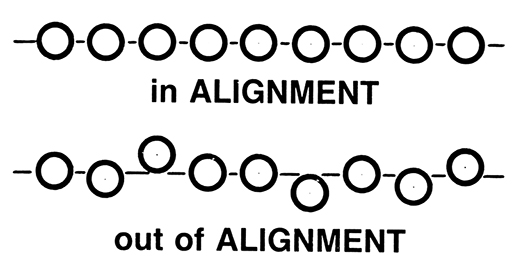1 Aligning your assessment to the curriculum
Regardless of the subject area, what you are trying to teach your learners will, usually, be guided by clear assessment criteria. Ensuring any assessment you plan is aligned to these assessment criteria is essential to meet the needs of an awarding body.

In order to be able to implement and evaluate the usefulness of any innovative assessment you must first consider how the assessment should be aligned with the curriculum that you are teaching. To achieve this, you must follow key elements which are often considered to be tenets when designing, creating and delivering assessments in education. These include:
- reliability (can be used as a reliable source as assessment for learning or assessment of learning)
- consistency (the application of the assessment method is consistent for all learners)
- validity (replicate the skills and knowledge required for employment or articulation onto a higher programme of study)
- authenticity (clearly reflects the skills needed for employment or higher-level study)
- holistic (encompasses a wide variety of skills and knowledge)
- learner ownership (the learners have ownership of the assessment process).
Before you proceed with the final week of the course, review the answers you gave to the questions below in Week 1.
- Assuming your learners will progress to university, what skills do your learners need to progress in education from now until they graduate?
- Assuming your learners may leave the education system and not attend university, what skills will all the learners need to progress into employment?
- Assuming your learners will progress to university, what skills do your learners need to progress into employment after they graduate?
As stated earlier, a key aspect in taking your idea of innovative assessment forward and determining its worth for a learner is to consider how the assessment can contribute towards the achievement of learning outcomes in the subject curriculum that you are teaching. Each curriculum and subject are different with different learning outcomes and skills that learners are required to demonstrate.
It is not just a matter of the learner demonstrating knowledge and understanding. Other areas are also assessed including cognitive skills, such as integrating evidence to support an answer; or practical skills such as demonstrating an awareness of health and safety in an environment in which they may be working. They may also be required to demonstrate key skills such as their ability to interpret numerical information or use technology to access information sources.
In order to understand how your idea for assessment can be integrated into the curriculum you must consider the learning outcomes that you’re trying to achieve. Again, learning outcomes will differ between different subjects. Learning outcomes that you would like your learners to achieve will strongly influence what you will ask them to do in relation to delivering an innovative assessment.
